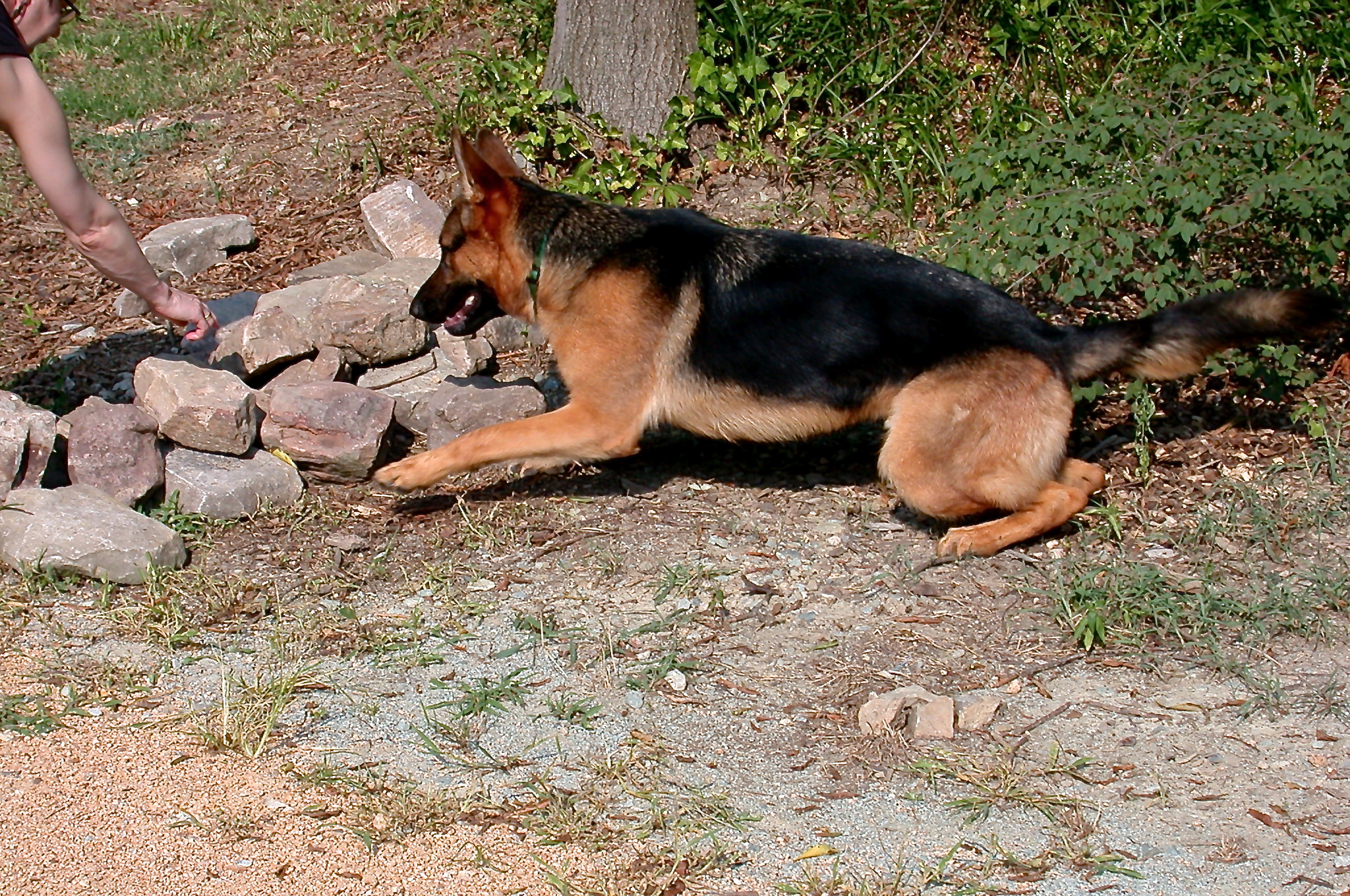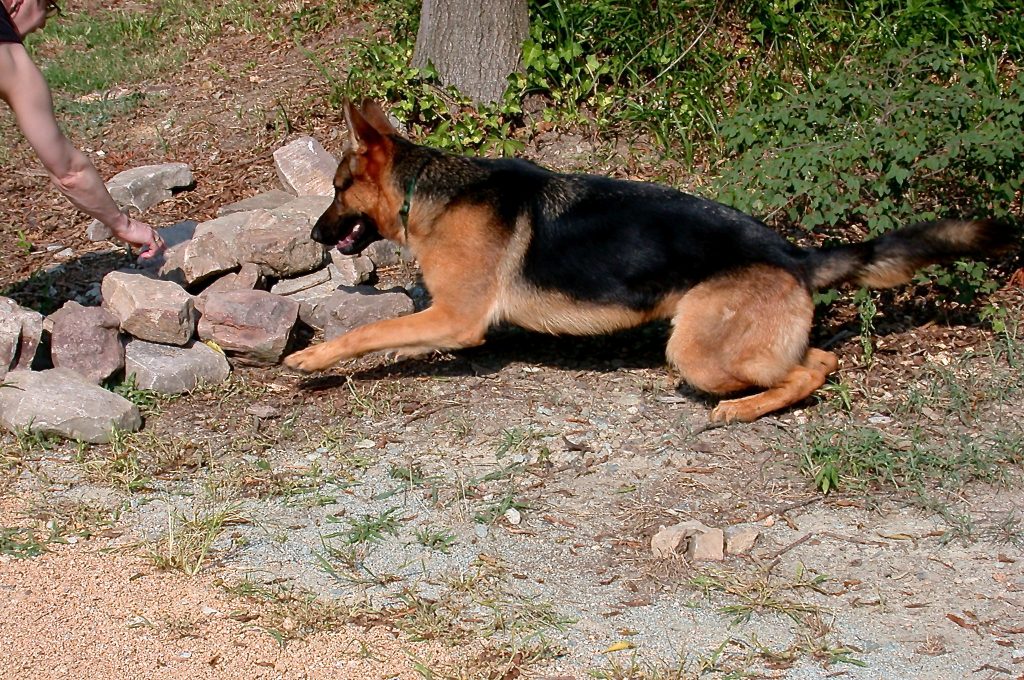
Two Sniffin’ Dogs — and a Training Aid in an Oak Tree
I put some simple cadaver training aids out in a cooperative neighbors’ big backyard last week: some carpet, a few teeth, dirt, a sheet. I ran first Coda, then Solo. I knew that Solo might track Coda but wouldn’t be distracted by the knowledge that a dog had come before him. It wasn’t a challenging training for either him or me. It was a chance for him to stretch his legs and get happy.
I haven’t trained the two dogs one right after the other often. That’s because I don’t have an SUV to cart them around together when I go to K9 trainings. The Camry is still our dogmobile. The two dogs have different needs, and I’ve spent the past eight months prioritizing Coda’s getting used to all sorts of search environments and bonding. Plus, learning to mind me. I have trouble multi-tasking anyway, so I’m only occasionally frustrated by our transportation limitations. I do know people who can train and work two dogs. Or more. I admire them. I am not them.
Today, I loved being able to work both dogs in turn. I also realized the differences between them. They both found the hides. Since I often let Solo work at a distance from me, he will sometimes run back to find me, once he’s found the aid, and then go back in for his final alert. Sometimes, I can fling his tug toy from 20 feet away if I limber up my arm. That was the case today. Since I’m still working Coda on a long lead, I do have to move in behind her. I’m rewarding her right now with desiccated liver right at the source. The smell of the liver in my pocket is her best cue what game we are playing. I only use the liver for scent training, so even before I tell her, “Go find your squirrel!” she’s ready. I move in behind her once she’s found her “squirrel,” and if she’s not in a down, gently encourage her before I start giving her several pieces in a row.That’s to reward, but also to encourage her not to paw at the training aid — or try to devour it. She doesn’t leave the source. I like that.
Dogs work differently, of course. Duh, I knew that. Yet, somehow, when it’s your own dogs working so differently, it’s ever so much clearer. It was fun seeing those differences up close last week. It’s not just that Coda is just a year old, and Solo now nine and a half, although that matters, too. Solo is a skeptic at this point in his career: ever-suspicious about where scent is the strongest. He works from the outer perimeters in, and once he hits scent, he slows down immediately. If he finds the hide and it’s something that emits faint scent, he’ll check just outside the scent pool to confirm before coming back for a final alert. It’s pretty clear he’s ruling out areas; making sure his final choice is the right one.
I found the picture above from Solo’s early days of training — he was less than a year old, coming in on a hide in the rocks. I remember the joy and abandon with which he would fling himself into an alert in those early days. It’s not that he has lost that joy, but speed no longer matters to him quite as much. Or to me. He now wants to be sure. He’s like a thoughtful student who goes over the quiz one final time before handing it in; or a veteran reporter who double-checks his sources.
Coda is snotty and certain; she’s a natural. It’s too early in her training for her to even consider that air currents might trick her. She may realize at some point that it might not be that easy, but for now, she doesn’t doubt or query her nose when she gets into source scent. It’s not that she flings herself as Solo did as a youngster. But the map she draws of her scent world appears nonetheless entirely consumed with the here and now, rather than the what ifs. I’m pleased that her map, for all its limitations, is three-dimensional: not flat, but a nice globe. If scent is high, she’ll levitate and climb along walls; she leaps onto whatever is nearby to get closer to it. She ignores me entirely. She moves in on the hide and likes to paw or try to sample it if it’s accessible. She’s like a toddler: happy to experience the world through her mouth, not just her nose. Liver has been the best substitute for the hide that she finds to start to discourage that tendency. Long term, I’m hoping for a toy that will be as meaningful to her as liver. That way, my pockets won’t reek. I also remember to remove the toys before I run the pants through the washing machine.
